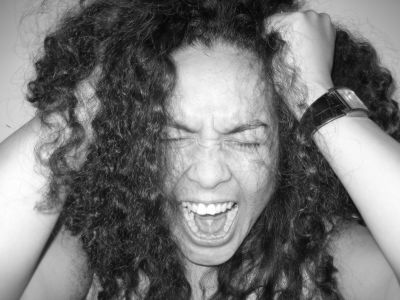Researchers argue that the male beard may have evolved to protect the face from attacks such as punching

Some men have thick and fine beards, but those who have beards shaved every day sometimes think that 'why do you need a beard to grow?' Should be. In a paper published in the Open Access Comparative Biology journal,
Impact Protection Potential of Mammalian Hair: Testing the Pugilism Hypothesis for the Evolution of Human Facial Hair | Integrative Organismal Biology | Oxford Academic
https://academic.oup.com/iob/article/2/1/obaa005/5799080
Did men's beards evolve to absorb a punch to the jaw? | Live Science
https://www.livescience.com/beards-protect-face-punches.html
Your Beard May Protect Your Brain If You Take It on the Chin | Psychology Today Ireland
https://www.psychologytoday.com/ie/blog/black-belt-brain/202004/your-beard-may-protect-your-brain-if-you-take-it-the-chin
There are many differences in physical characteristics between men and women, and the amount of beard growing on the face is extremely different between men and women. However, it was not known exactly why whiskers developed only in human men. Researchers pointed out, for example, that a good mane on a male lion was meant to protect itself from the claws and teeth of hostile individuals, but a human beard said, 'Attract women. There is also an opinion that it is just a decoration for '.

A research team
To explore this idea, the research team built a model of the facial bone using a material with properties similar to the compact bone that makes up the surface of the human bone. Also, because it was difficult to obtain a bearded skin sample from a human carcass, he said that he used a sheep skin sample purchased from a slaughterhouse to wrap a bone model. Sheep hair is not exactly the same as human beard, but considering the overall amount of hair in the sample, it seems to be quite similar to human beard.
The research team used physiological saline under three conditions: 'pulling hair out', 'trimming hair to a length of about 0.5 cm or less', 'state with hair about 8 cm in length' We tested skin samples that were moistened to the same level as the live tissue soaked. All of these three conditions reproduced the human 'without a beard', 'with a beard trimmed', and 'with a full beard'.
Then, a drop weight impact test was performed by dropping a rod with a diameter of about 3 cm and a weight of 4.7 kg from the skin sample enclosing the bone model. The researchers dropped the rod under various conditions and evaluated how the presence or absence of hair affected the impact on the bone.

As a result of the experiment, 95% to 100% of the bone models were damaged in the absence of hair or short trimming, but even in the load setting, only 45% of the models were found to be damaged in the condition of full hair. Also, it seems that the time from the impact to the damage is long when the hair is fully grown. It was shown that the state of full hair growth absorbs about 30% of the energy of impact compared to the state where it is not.
'The results of the study show that hair can significantly reduce the impact from blows, absorb energy, and reduce the incidence of serious injury,' the researchers say. The beard has evolved to protect key areas and improve combat performance. '

Related Posts:
in Science, Posted by log1h_ik







